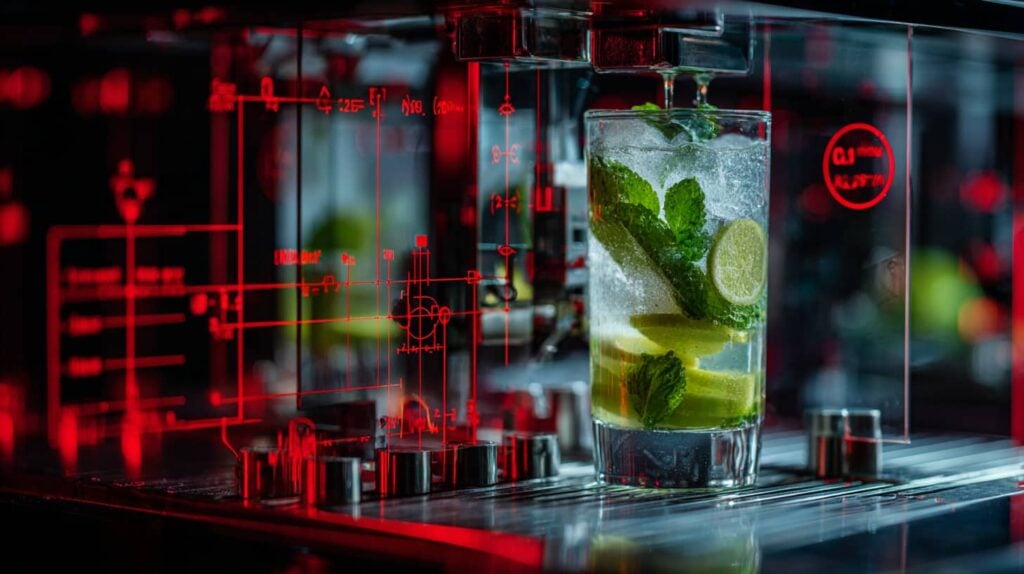What makes a mojito the perfect mojito? The answer lies not only in fresh ingredients or the bartender's technique - but in the precise mathematical formulas behind every successful cocktail.
The science of flavour
A perfect mojito follows an invisible algorithm of ratios, temperatures and timing. Rum to lime: 4:1. sugar content: exactly 12%. Crushed ice: 180 grams at -2°C. Mint infusion: 8 seconds, no longer.
This precision is not a gimmick - it is the difference between an average drink and an unforgettable one. But while traditional bartenders rely on experience and intuition, modern cocktail machines calculate with mathematical precision.
The human factor as a confounding variable
Even experienced bartenders are subject to natural fluctuations. Stress changes the dosage. Tiredness influences the timing. Different limes have different acidity levels. What tasted perfect yesterday may be unbalanced today.
A restaurateur from Munich's nightlife scene reports: "Our star bartender mixes fantastic mojitos. But only when he's well rested, has the right limes and isn't under time pressure. That's about 30% of the time."
Machine precision meets flavour algorithm
Modern cocktail machines solve this problem through algorithmic precision. Every mojito is mixed according to the same, perfectly calibrated formula:
Step 1: Mint maceration at exactly 2.3 bar pressure for 8 seconds
Step 2: Rum dosing accurate to 0.1 ml at optimum flow speed
Step 3: Lime juice addition temperature compensated
Step 4: Soda integration with controlled carbon dioxide retention
The result: 100% consistency in every single drink.
The psychology of perfection
Why do guests often perceive machine-mixed mojitos as superior? The answer lies in expectations. Consistency creates trust. When every mojito tastes exactly the same - and perfect - it creates a reliability that the brain interprets as quality.
A neuroscientist explains: "Our taste system favours predictability. Fluctuations are unconsciously perceived as inferiority."
The algorithm in figures
What exactly is behind the perfect mojito algorithm?
Temperature matrix: Rum at 18°C, lime juice at 4°C, soda at 2°C
Mixing speed: 180 revolutions per minute for 3.2 seconds
Pressure conditions: Soda added at 1.8 bar for optimum carbonation
pH equalisation: Automatic acidity regulation depending on the lime batch
These parameters are not created by chance, but are based on years of flavour research and thousands of test runs.
Efficiency meets perfection
The algorithm-based approach also solves the speed problem. While a bartender needs 90 seconds to make a handmade mojito, the machine produces the same result in 12 seconds - with higher quality.
For caterers, this means more satisfied guests, less waiting time and higher turnover. One event organiser reports: "At festivals, we can now serve 300 perfect mojitos per hour. It used to be 80 mediocre ones."
The future of the cocktail algorithm
Artificial intelligence develops these algorithms further. Machine learning analyses guest feedback and optimises continuously. Seasonal fluctuations in ingredients are automatically compensated for. Regional flavour preferences are incorporated into local algorithm variants.
The perfect mojito is no coincidence - it is the result of precise calculations that eliminate human weaknesses and enable mathematical perfection.
